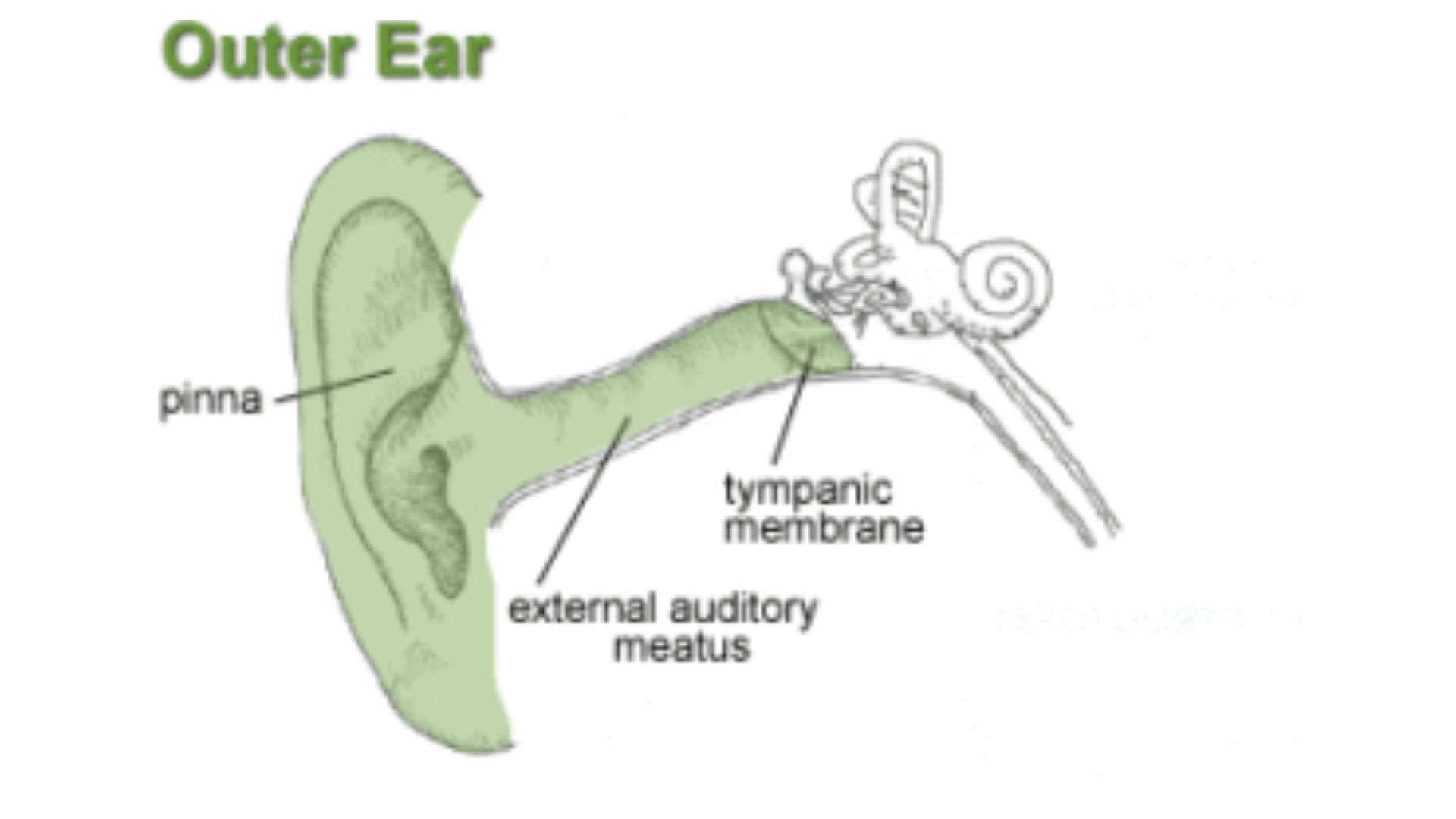The Outer Part of the Ear
The parts of the outer ear include the Pinna, the External Auditory Meatus and the Tympanic Membrane

Pinna
The pinna is the visible portion that is generally referred to as “the ear.” Its function is to localize sound sources and direct sound into the ear. The dimensions and folds of the pinna cause certain sound frequencies to be amplified and other frequencies to be weakened. Each individual’s pinna puts a distinctive imprint on the acoustic wave traveling into the auditory canal.
External Auditory Meatus
The ear canal extends from the pinna to the eardrum and is about 26 millimeters (mm) in length and 7 mm in diameter. Size and shape vary among individuals. This is an important factor to consider when fitting hearing protectors. The ear canal protects the eardrum and acts as a resonator, providing about 10 decibels (dB) of gain to the eardrum at around 3,300 Hertz (Hz). The net effect of the head, pinna, and ear canal is that sounds in the 2,000 to 4,000 Hz region are amplified by 10 to 15 dB. Sensitivity to sounds is greatest in this frequency region and noises in this range are the most hazardous to hearing.
Tympanic Membrane
The eardrum separates the outer ear from the middle ear, creating a barrier that protects the middle and inner areas from foreign objects. It is somewhat cone-shaped in appearance, and is about 17.5 mm in diameter. The eardrum vibrates in response to sound pressure waves. The actual distance that the membrane moves is incredibly small (as little as one-billionth of a centimeter).
